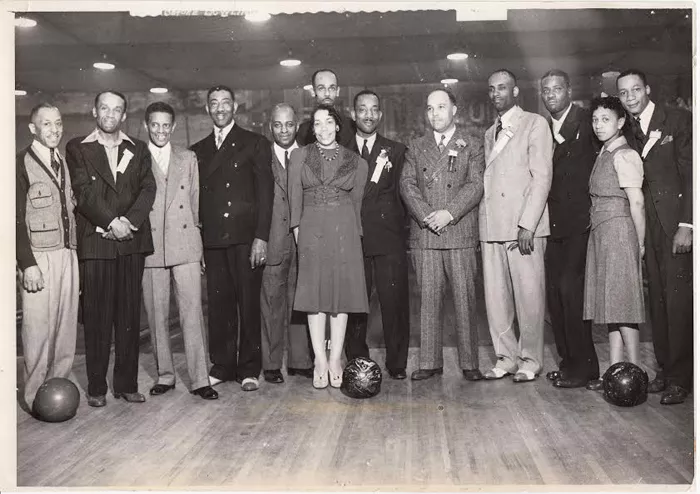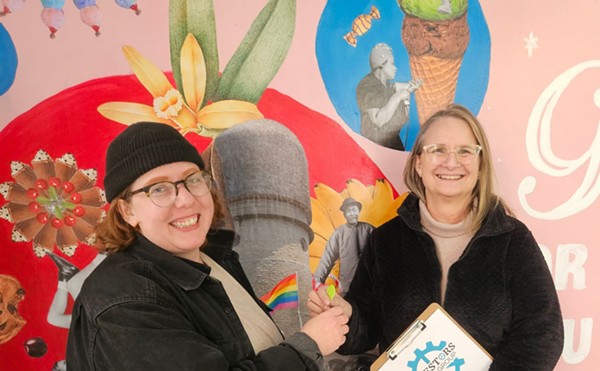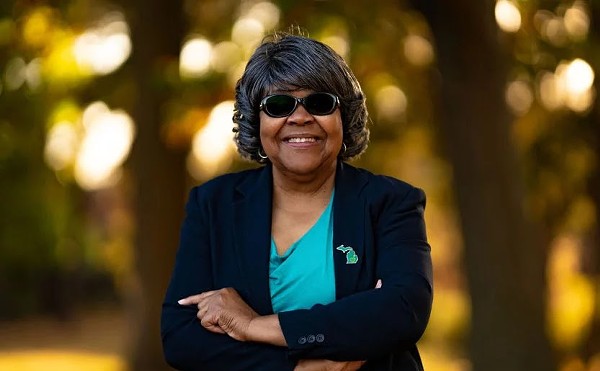The battle they fought didn’t play out on the gridiron of the football field or the diamond of the baseball park. It may seem odd today, but it was a struggle starring African-American fans of the game of ten-pin, and it played out on the wooden lanes of America’s bowling centers. And it turned a corner in Detroit, 75 years ago this August, with the formation of the National Negro Bowling Association. That trailblazing organization, since 1945 known simply as The National Bowling Association (TNBA), is back in its birthplace this spring, in the midst of its TNBA National Tournament and Convention, drawing an estimated 10,000 to 15,000 people to bowling centers from Detroit to Ann Arbor.
BOWLING BOOM
To back up a bit, a whole generation has grown up seeing the sport of bowling lampooned in such comedies as The Big Lebowski and Kingpin, and may not realize that, in the middle of the 20th century, bowling wasn’t a punch line — it was insanely popular.
The U.S. government pushed it as a healthful activity for working people with “Bowling for Health” campaigns. From World War II forward, the military promoted the sport, making bowling centers a regular feature on military bases. By the 1960s, almost every big-city newspaper had a sports reporter following the bowling scene. In the 1970s, bowling was a heavily watched televised sport, and its champions were minor celebrities.
Like many organized sports, bowling became popular at a time when the American frontier was vanishing and the country’s cities were growing. But what set ten-pin apart was the resource-intensive nature of the game. Most inner-city kids could toss a football or bounce a basketball. Bowling, however, appealed to working-class adults, mostly white, with money to spend. In a consumer society, it was the ultimate resource-sucking pursuit, involving polished wooden floors, ball-return systems, a small staff of janitors, shoe-checkers and pin-setters, as well as an entire building to house the action.
In wartime Detroit in the 1940s, with its free-spending, predominantly white working class, and its bone-chilling winters, bowling provided a year-round getaway from war work, a way to recreate and socialize right in the neighborhood.
But it was a segregated oasis, one that barred black Detroiters from almost all the best lanes. And with trainloads of black Southerners coming to town seeking newfound prosperity and social equality, the game of ten-pin began to symbolize equality in a way that’s hard to understand today.
UNLIKELY BOOSTERS
When Mark and Diane Voight come into our offices at Metro Times to talk about the upcoming TNBA tournament, we can hardly believe our eyes. Almost the very caricature of a sweet elderly white couple, the Farmington Hills residents look like the last people you’d peg as advocates for an African-American bowling organization.
But the Voights got involved with TNBA shortly after they acquired the now-razed Satellite Bowl in Dearborn Heights, which Mark fondly recalls as “an iconic 84-lane center that was one of those personalities in and of itself.” A few months after the Voights bought the center in January 1985, Mark met TNBA National Tournament Director Jim Alston, with whom a friendship began over a drink at the bar. He says he later convinced Alston and his group to come to the Detroit area to host their national tournament here in the mid 1990s, when the couple had moved on to run another bowling center, Canton’s Superbowl. It makes sense the Voights would woo TNBA for its prestigious tournaments, still among the largest in bowling.
It’s good business for the Voights, of course, but Mark sounds a more personal note, saying, “We’ve struck up a friendship with quite of a few of the people that were bowling, including those in the local senate [TNBA’s local chapters are called senates]. And we became close to them. We’ve gone to their national conventions and we’re fairly regular attendees, much more so than the other proprietors around the country. And out of this, we’ve made a few long-term friends.”
For the Voights, it’s just the way they do things. “We treat all of the tournaments that come to town as personal relationships,” Mark says. “So we became friends with the head of the national Elks, we are friends with the people from the International Knights of Columbus,” he allows himself a laugh and adds, “Here’s a nice Jewish boy and girl going to the International Knights of Columbus bowling association meetings in the various cities. … So that’s our story — that’s how this unusual couple became involved.”
With decades of experience in bowling, Mark gives his spin on the turmoil of Detroit’s bowling scene at midcentury.
He says, “Throughout southeastern Michigan, we had an influx of people from all different areas. There was a large segment that came from the South — from African-Americans to, for lack of a better term, hillbillies. They came from the Middle East, Germany, and from Italy — and they all came because the jobs here were plentiful.”
But one thing war workers’ impressive wages couldn’t buy was quality recreation. For all its economic might, wartime Detroit was a city of cheap diners, clip joints, and noisy “cabarets.”
“Back then,” Mark continues, “there were not a lot of activities for people, and all of a sudden they had some time on their hands and they also had money, and they were looking for something to do. So when bowling came along … people were just flocking to these places. They had a large bowling center downtown, on Jefferson, that, as I understand it, was a six- or seven-story building with eight to 10 lanes on each floor. People used this as a diversion because they had the time and the money and nowhere else to go. Back then, they didn’t have racket sports, TVs, movies, etc. So this became, for many people, their evening out — sometimes as many four or five times a week.”
A TOUGH SPLIT
Fans of Ken Burns’ documentary series Baseball know about the old Negro Leagues, and about how the Dodgers’ general manager Branch Rickey and ballplayer Jackie Robinson finally broke the color barrier in 1947. That struggle would play out in football, in basketball — across all American organized sports. For black ten-pin bowlers, however, that story begins before World War II, right here in the American Midwest.
During the 1930s, African-Americans were almost completely closed out of the sport of bowling, both by segregation and economic inequality. Speaking from his home in Ellenwood, Ga., TNBA historian Wayde Broughton, 67, sets the scene:
“From an economic standpoint,” Broughton says, “most of the blacks in the ’30s did not have income sufficient enough to be able to bowl.”
But with a gradual migration of blacks moving North, and President Franklin Roosevelt’s gradual but grudging loosening of official segregation, some African-American workers began to be promoted to higher-paying work with the post office, in the munitions industry, and more. But the private businesses blacks hoped to patronize would hardly budge when it came to letting them in the door.
“The proprietors could call the shots,” Broughton says. They followed the social climate, which was: ‘No.’ Their clients did not want to share either.”
In segregated white bowling centers, blacks were relegated to being pin-setters, a dangerous job done by young kids, old rummies, and blacks, for a pittance.
Broughton says, “Most of the pin boys were African-American. It was mixed. The white pin boys were younger, and the black pin boys were both groups, young and old. I know a man, in his 80s now, who was a pin-setter, and he said they’d get three cents a frame. It was amazingly low.”
AN IMPERFECT GAME
As it turned out, the best way for African-American bowlers to gain access to enough lanes for league play was to do it when a segregated, white bowling center was closed. Historian Broughton traces that trend to the early 1930s in Cleveland, where black bowling first exploded. He credits J. Elmer Reed as a major player.
“He was a strong spokesman,” Broughton says. “Reed seemed to be a strong negotiator. He had a lot of good relationships with people in the major business centers. They negotiated a tournament, where the owner would put a sign up, ‘Closed for Repairs,’ or something like that, and then they would go in after-hours and bowl. That was the way the first tournaments were able to be held because they would go more than one day, and one or two lanes wasn’t going to do it when you’re bringing people from different cities to participate.”
Broughton describes a bowling scene bursting at the seams, saying: “They started bowling, I think, in 1933 in an eight-lane house called Napodals Alleys. They eventually moved to Waldorf Recreation Lanes. They started with 12 teams, then 18 teams, then the women started bowling. The women’s league, which they called the Ladies’ Progressive League, had six teams. So now you’ve got 24 teams trying to play on 12 lanes.
“That was the beginning of the national organization. They started facing up to the fact that if they wanted to be whole as a citizen in this sport, they’d have to form a national organization because they couldn’t do it singly.”
The various bowling teams, which had already begun hosting matches in different Midwestern cities, met to discuss forming a national organization in 1939. That meeting took place in Detroit.
The group’s 22 founders met on Aug. 20, 1939, at Paradise Alley’s swanky Frogs Club on Madison Avenue, a popular meeting place for prominent black Detroiters. Out of that convention came the National Negro Bowling Association. Its aim: to make more space where African-Americans could bowl.
“The social climate existed already,” Broughton says. “The war was starting, you had people moving up North, more and more people coming into bowling, and the racial restrictions. So they decided to get help from other cities and start a national organization.”
BOWLING TOGETHER
In the 1940s, with great effort and TNBA support, black businessmen were able to acquire the funding to create their own bowling alleys. Much of this activity took place in TNBA’s “starting five” cities — Chicago, Cincinnati, Cleveland, Detroit, and Toledo — Midwestern centers of industry where relatively prosperous blacks could scrape together funding. In 1941, J. Elmer Reed opened the first black-owned bowling center, United Recreations in Cleveland. Black-owned bowling alleys appeared the next year in Atlanta, Indianapolis, and Toledo.
Detroit’s black bowlers were better off than many. Heavyweight champ Joe Louis loved bowling, and found funding and backers for his 20-lane Paradise Bowl in 1942. Aside from the dazzling live entertainment in Paradise Valley, the Paradise Bowl was black Detroiters’ favorite destination by some accounts. If that sounds far-fetched, consider that Detroit remains home to the oldest continuously operating bowling alley, Garden Bowl, which turns 100 this year. Or that Motown founder Berry Gordy, his brother, and his father were all avid bowlers. (It’s a fair guess Detroit’s vibrant black bowling culture played some role in native Detroiter George Branham III becoming the first African-American to win a major PBA event in 1986.)
As the 1940s wore on, TNBA kept growing, with senates opening in cities across the United States. By 1947, Ebony magazine estimated that there were 15,000 black bowlers actively participating on a weekly basis nationwide. But the ability of black proprietors to build or buy lanes couldn’t keep pace with black bowlers’ demand for a game.
Broughton says, “Basically, you had to find people to finance it in the same race or group, unless you had some really good friends that would help you out. It was not prevalent for banks to give loans to black potential bowling entrepreneurs.”
As with all segregation, it grew obvious that separate was inherently unequal, and couldn’t last. And if the country’s bowling centers were to be integrated, ending segregation at the competitive levels was essential to that effort.
That’s why, in the late 1940s, TNBA organizers joined forces with the NAACP, the Committee on Fair Play in Bowling, and even a commission led by Minneapolis Mayor Hubert H. Humphrey, urging the American Bowling Congress (ABC) to remove the “Caucasian-only” clause from its 1895 constitution. In 1950, three years after Jackie Robinson broke the color barrier with the Dodgers, ABC delegates voted to strike the restriction from its founding document, and the Women’s International Bowling Congress followed suit the next month.
In 1951, in St. Paul, Minn., black bowlers competed for the first time in the ABC National Tournament. As the decade continued, the battle for civil rights raged on. And bowling alleys would remain a contested territory, especially in the Deep South.
STRIKES FOR FREEDOM
As Mark Voight puts it, “The problem is, as you well know, you can legislate segregation out of the people’s actions or activities, but you can’t legislate it out of their hearts. As a result, the segregation continued on for quite a while.”
It didn’t help matters that, at the very moment organized bowling became an integrated competition, America’s inner-city bowling palaces were undergoing dramatic changes. The introduction of automatic pin-setting machines brought bowling into the mechanized age. It also meant that the city’s expansive old-fashioned alleys needed critical investment just as cities were beginning to hemorrhage prosperous white residents to the burgeoning suburbs. In many Midwestern cities, including Detroit, the bowling industry responded to this by building a new generation of massive, state-of-the-art bowling centers in the suburbs, far away from minorities and the poor.
In this environment, TNBA became a valuable bargaining chip in the fight to ensure black bowlers access to lanes. Hosting some of the largest tournaments gave black bowlers the collective power to reverse segregationist policies nationwide. In the 1970s, TNBA would tackle stubborn Southern segregationists on their home turf.
Speaking to Metro Times from his office in Jackson, Miss., TNBA National President Greg Green, 60, describes a scene, “once upon a time,” that could be cold and frosty to people of color.
“It was sort of like that here,” Green recalls. “In our city we had about four bowling centers, and they hadn’t always … well, I’m from Mississippi: I think that should explain a lot.
“I actually own a bowling center that, back in the 1960s, people of color had to sue to go in. There are stories about how, although the Caucasian clause was lifted, there were still places that weren’t ‘people-of-color-friendly.’
“In 1973-1974, the South had just begun to come about, as far as The National Bowling Association was concerned. It was basically a grand time for us, you know. The South went from the smallest region to the largest region in the organization.
“And we dealt with it. Right now, there’s probably not a center in the world where we haven’t been in or made an impact on.”
Recalling a quite different kind of integration effort, Mark Voight tells us about a conversation he had with Detroit’s Lafayette Allen Jr., a prosperous black businessman who owned Allen & Sons Supermarkets. He was also a well-known black bowler who became a longtime bowling editor for the Michigan Chronicle. It was Allen who sponsored the first team that competed in the ABCs in 1951. He was a regular customer at Satellite Bowl when the Voights owned it.
Mark Voight explains, “He lived, I believe, in Inkster, where he had a school named after him. Anyway, we were sort of sitting there and he said, ‘Do you know how Satellite Bowl was integrated?’ And I said, ‘I haven’t got a clue.’
“He told me, I’m guessing it was in the mid-1960s, ‘I came in one day in the early afternoon and asked if I could have a lane. Now mind you, there were no other bowlers bowling, and every lane was empty, and I was told, “No, there are no lanes available.” But one lane was on, so I proceeded to walk down, put my shoes on, and I started bowling.’ And that was the first African-American that bowled at Satellite.”
ALL JOINED UP
Seventy-five years after its formation, in a world of universally integrated sports, how does TNBA thrive? How does an organization get members to pay TNBA and ABC dues to belong to an organization that won its big fight years ago?
President Green tells us how TNBA’s social aspects carry an appeal that goes beyond being strictly a sporting organization, from gospel brunches to spectacular parties.
“We have a tendency to enjoy ourselves and have fun,” Green says. “My philosophy is that if there’s no fun there, it’s going to get old and die, so we have a reputation for having good, structured fun, and good structured parties.”
This week’s celebration should be no exception, as the competition culminates in days of pageantry. Thursday sees a “Battle of the Sexes,” a man versus woman ten-pin match that Green calls “a blast,” a karaoke-bowling reception at Southfield’s Plum Hollow Lanes, then the King and Queen’s Ball on Friday, before meeting for one last time at Saturday’s “Bon Voyage” gathering.
TNBA’s emphasis on these social aspects makes sense. More than other athletic pursuits, bowling is sociable. It’s a relaxing sport we play together, in palaces built just for us. It’s a fitting way to bridge divides and bring people together, and it dovetails neatly with TNBA’s historic mission.
Or maybe bowling businessman Voight says it best: “It’s a real fun business to be in. Everything is social, and that’s the beauty of the sport.”
To learn more, see tnbainc.org.






